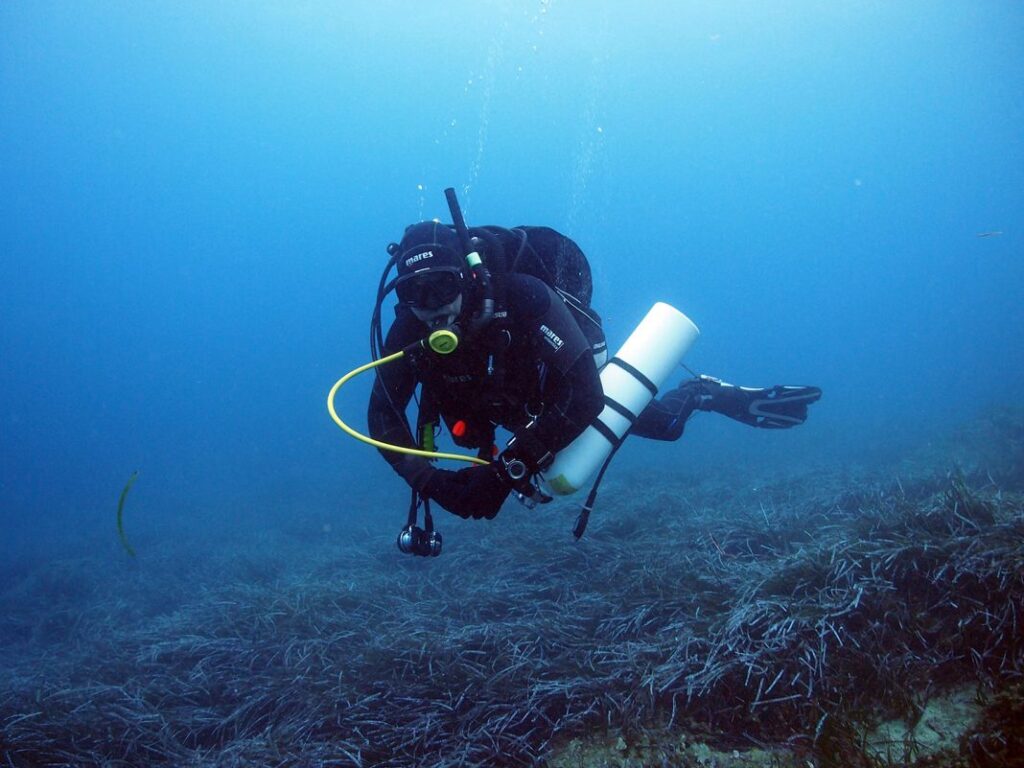Exploring the underwater world is an exciting adventure that necessitates careful planning, training, and skill. How to descend safely and comfortably is a skill that every scuba diver must master. A smooth descent lays the groundwork for a successful dive and ensures that you conserve energy and air supply. In this article, we’ll review everything you need to know about scuba diving descents, including the various techniques, tips to improve your descent, and common mistakes to avoid. Whether you’re a beginner or an experienced diver, this guide will help you dive confidently and enjoyably.
How to Descend; Safely and Comfortably
When scuba diving, we must master one specific skill: safe descent. A successful dive begins with a smooth and controlled descent, which sets the tone for an enjoyable experience. In this article, we’ll review everything you need to know about scuba diving descents, such as the various techniques, tips for improving your descent, and common mistakes to avoid.
Descending Techniques
There are several methods for descending during a scuba dive. The giant stride, backroll entry, and controlled descent are the most commonly used.
For shore dives or when entering the water from a boat, the giant stride is the most popular technique. To perform the giant stride, stand at the edge of the boat or on the shore with your regulator in your mouth, mask on, and fins in your hand. Take a significant step forward, raising your opposite leg and lowering yourself into the water. Don your fins, secure your mask and regulator and descend once you’re in the water.
Another common technique used when diving from a boat is the backroll entry. It entails sitting on the boat’s edge with your gear on, tilting back, and rolling back into the water. Once in the water, descend safely using the same steps as the giant stride.
When diving in areas with strong currents or when a slow and controlled descent is required, the controlled descent technique is used. In order to begin your descent, inflate your BCD (buoyancy control device), hold on to a descent line or anchor line, and slowly release air from your BCD. This method ensures a slow, steady, and controlled descent, allowing you to gradually adapt to pressure changes.
Tips to Improve Your Descent
The descent is the most important part of the dive, and a few pointers can help you improve your technique, conserve energy, and have a more enjoyable experience.
- Equalize Early and Frequently: Equalizing your ears is critical to preventing discomfort and injury caused by pressure changes. Begin equalizing as soon as you begin your descent and continue to do so throughout the dive.
- Control Your Breathing: Slow and steady breathing allows you to conserve your oxygen supply and avoid panic. To maintain control, take deep, slow breaths and exhale slowly.
- Use Your Fins: Your fins are your primary means of propulsion underwater. During the descent, use them to maintain control and adjust your buoyancy.
- Don’t Be Hasty: A smooth and controlled descent is essential for a safe and enjoyable dive. Take your time, breathe deeply, and enjoy the moment.
Common Mistakes to Avoid
Scuba diving requires patience, skill, and experience to descend. Even experienced divers, however, make mistakes that jeopardize their safety and enjoyment. Here are some common mistakes to avoid while descending:
- Skipping the Pre-Dive Check: Before entering the water, perform a pre-dive check to ensure that your equipment is in good working order and that you are ready to dive.
- Too Quickly Descending: Descending too quickly can result in injury, disorientation, and discomfort. Take your time and descend steadily and slowly.
- Failure to Equalize: Failure to equalize can result in ear pain, injury, and a loss of balance. Equalize frequently and early.
- Neglecting Your Breathing: Panic, shortness of breath, and decreased air supply can result from uncontrolled breathing. To maintain control, take deep, slow breaths and exhale slowly.
A successful and enjoyable scuba dive begins with a comfortable and safe descent. You can ensure a smooth and controlled descent by mastering the various techniques, following the tips to improve your descent, and avoiding common mistakes, allowing you to focus on the beauty of the underwater world. Always prioritize your safety, adhere to your training, and respect the environment.
Take the time before your next dive to go over your descent technique and make sure you’re comfortable and confident in your ability to descend safely. Continuous learning and practice are essential whether you are a beginner or an experienced diver to ensure a safe and enjoyable dive.
In conclusion, scuba diving descents are an important part of any dive, and mastering the techniques and adhering to tips and guidelines can improve the experience and ensure your safety. Don’t rush, equalize frequently, keep your breathing under control, and use your fins to maintain control and adjust your buoyancy. By avoiding common blunders, you can concentrate on the underwater world’s beauty and make the most of your dive. Have fun diving!
Thank you for reading! Learn how to master the art of breathing while scuba diving here.

Pingback: Dive with Confidence: Tips and Guidelines for Avoiding the Bends - Scuba Diving Corner